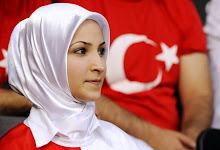Component-Computer
Diposkan oleh princess di 6:46 AM 0 komentar
Label: computer
Understanding Computers.
Memory is divided into two kinds, namely; * Read Only Memory (ROM), the memory can only be read alone, not to be changed and removed, and was filled by the computer manufacturer. The contents of ROM is required when the computer is turned on. Existing orders in the ROM part will be moved to RAM. Command in ROM include commands to read from the disk operating system, the command to check all the equipment in the unit and command system to display a message on the screen. ROM contents will not be lost even though there is no electricity. But at the present moment ROM has been developed and many kinds, including:
· PROM (PROGRAMMABLE ROM), the ROM that we can return the program to record may only once after that change can no longer be programmed.
· RPROM (Re-PROGRAMMABLE ROM ), is the development of PROM version where we can make changes repeatedly as desired.
· EPROM (Erasable Program ROM), a ROM and yangdapat we remove the program again, but how to eliminate it by using ultraviolet light. · EEPROM (Electrically Erasable ROM Program ), recent developments of the ROM mengubahdan where we can remove the program using teknikelektrik ROM. EEPROM is a type of the most widely used today.
* Random Access Memory (RAM), the name we can interpret that the RAM is a memory that can be accessed at random. RAM function is to keep our program if for a while (power on) when we turn off the computer, then all the data stored in RAM will be lost. The purpose of this RAM is the speed of data processing on the computer. In order to make the data we can not be lost as the computer is turned off, it would require an external storage media such as Floppy disk, hard disk, flash disk, PCMCIA cards and others.
4. Output Device, is a computer device that allows you to produce output, whether it's on paper (hardcopy), to the screen (softcopy) or the output of sound. For example a printer, speakers, plotter, monitor, and many others. From the description above we may conclude that the principles of computer work begins entering data from the input device, and the data processed by the CPU in such a way as we want and the data has been processed is stored in computer memory or disk. The recorded data we can see the result through the output device.
Diposkan oleh princess di 3:15 AM 0 komentar
Label: computer
Carebrum (big brain)
Carebrum (big brain).
Consisting of two parts called the right and Hemispherium cerabri fissures left by longitudinals cerabri and falx cerabri an expansion Duramater (layer covering a large brain.). Hemispherium large area consisting of:
a. Frontal lobe.
B. Parietal lobe.
C. Lobes occipitalis.
D. Temporal lobe
Other major brain regions:
a. Reili insula.
B. Lateral Gygus olfactorius.
C. Gygus parahippocamalis. Alur-emerged as a primary line of the barrier are:
• Sulcus centrallis.
• Sulcus lateralis. Hemispherium carebri sides of buildings connected by the so-called corpus callosum.
Diposkan oleh princess di 8:41 AM 0 komentar
Label: Central nervous system.
Central nervous system.
Central nervous system
Composition of the Central Nervous divided into two parts:
1. Central nervous system.
2. Composition of Peripheral Nerves.
Central nervous system (sential nervous system), the adult human consists of six parts:
1. Telancephalon consists of Hemispherium carebri right and left in the middle of the lamina terminalis.
2. Diencephalon.
3. Masencephalon.
4. Metencephalon: comprises:
a. Carebllum
b. Pons varolli
5. Myelencephalon - a - Medulla oblongata
6. Spinallis medulla.
Diposkan oleh princess di 8:16 AM 0 komentar
Label: Central nervous system.




